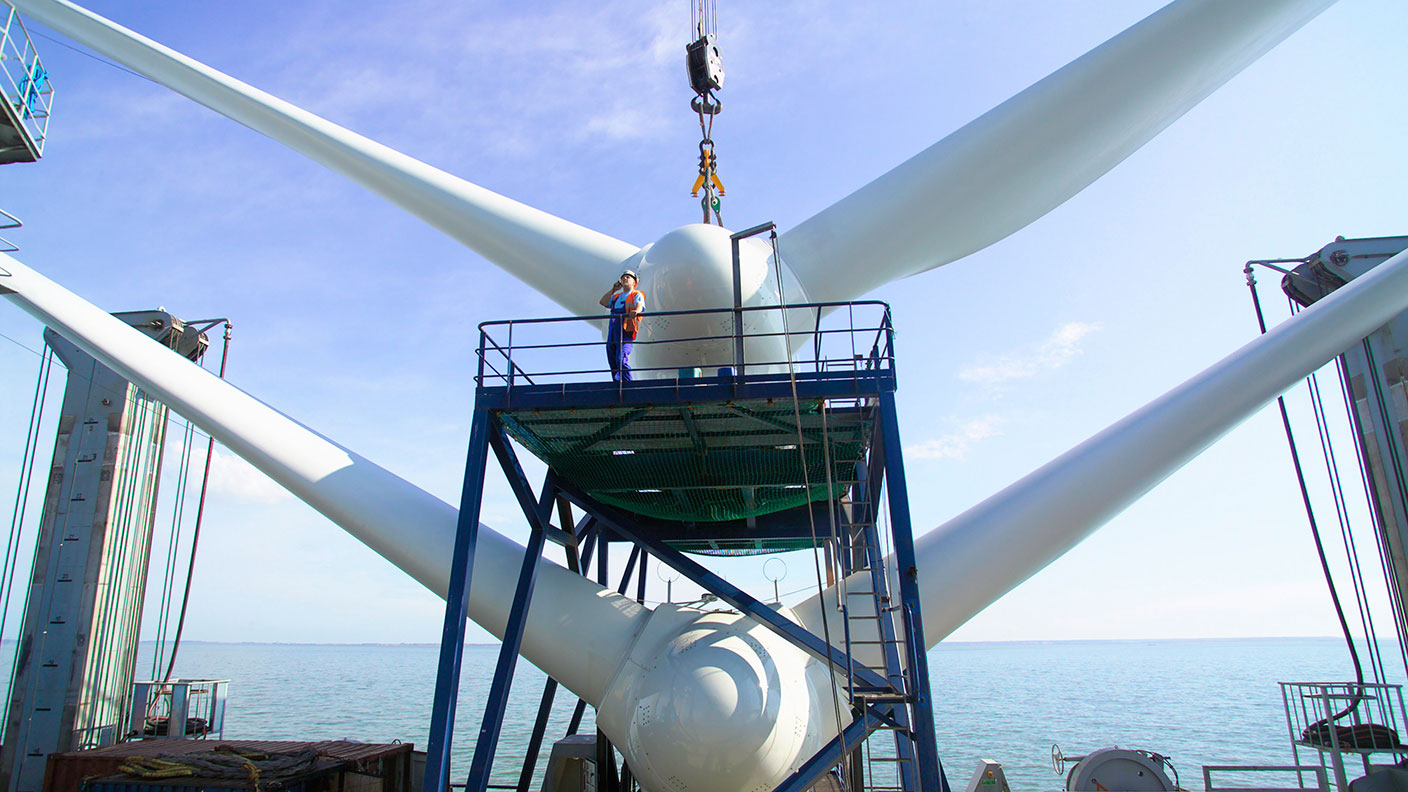Seven funds to shield your portfolio from inflation and rising interest rates
With prices and interest rates on the rise, it's tough being an investor. But there are options to help ride out the storm. Rupert Hargreaves picks seven funds that should provide protection for your portfolio.


It’s a pretty tough time to be an investor right now. The global economy faces a mounting series of challenges, and to make matters worse, central banks are embarking on the most aggressive bout of monetary tightening seen since the financial crisis.
Unfortunately, there is no sure-fire strategy investors can use to navigate these challenges unscathed. However, there are some options available to help ride out the storm.
Rising prices are causing havoc with the economy
Most of the challenges the economy faces today stem from cost-push inflation (as the rising costs of raw materials, for example, feed into rising prices). This is leading to concerns that we’ll see a self-feeding spiral whereby wage inflation takes off (employees demand higher wages to compensate for rising prices, but companies raise prices to cover the rising cost of employment).
MoneyWeek
Subscribe to MoneyWeek today and get your first six magazine issues absolutely FREE

Sign up to Money Morning
Don't miss the latest investment and personal finances news, market analysis, plus money-saving tips with our free twice-daily newsletter
Don't miss the latest investment and personal finances news, market analysis, plus money-saving tips with our free twice-daily newsletter
To counter this, central banks are starting to tighten monetary policy significantly for the first time since the financial crisis.
This has rattled investors for two main reasons. Firstly, by withdrawing liquidity from the system, central banks will push up borrowing costs. This will pile further pressure on companies already dealing with rising costs, which puts downward pressure on profits.
Secondly, higher interest rates also make equities less appealing compared to other assets. To put it very simply, a company with a 3% dividend yield, for example, looks like a great buy compared to a savings account or a bond paying less than 1.5%, even if the company is not expected to generate any earnings or capital growth.
(Obviously a savings account carries no risk of losing your money in nominal terms, whereas equities are far riskier, but this is for the sake of illustration).
However, if rates hit 2.5% (as some analysts are currently projecting) that 3% yield looks far less attractive.
In other words, rising interest rates not only put pressure on corporate profits, but they also result in the market placing a lower value on those profits.
Equity performance in periods of high inflation has been mixed
So, how can investors ride out this hostile environment? Just because something has worked in the past doesn’t mean it will work today, but history can act as a good guide.
In early 2021, a blog from the CFA Institute looked at the relationship between equity prices and inflation between 1947 and 2021. Using inflation data from the St. Louis Federal Reserve and Kenneth R. French Data Library, the blog concluded that inflation did not appear to have any notable effect on US equity returns even when inflation exceeded 10% on a nominal basis. After adjusting for inflation, “real” returns remained positive during periods of rapidly rising prices, but only just.
Sectors that deal with consumers, namely consumer goods and retail, seemed to suffer the most as these organisations generally struggle to pass rising costs onto consumers. The sectors that performed best during periods of high inflation were mining, hydrocarbons, steel and chemicals.
This data offers some guidance for investors, although I think the figures should be interpreted with caution. While commodity-focused companies might have a record of outstanding performance in periods of rising prices, these sectors are extremely cyclical.
So if you can time the market, (spoiler alert: most investors can’t) mining stocks and energy stocks can be a great way to ride out periods of high inflation.
Infrastructure and real estate assets as well as inflation-linked bonds and gold are other alternatives.
Inflation protection with real estate and infrastructure assets
As fellow MoneyWeek writer Max King points out, many property funds offer solid yields with inflation protection. He points to research from John Cahill at brokers Stifel that highlights Secure Income (LSE: SIR) and Supermarket Income (LSE: SUPR) for their long lease terms, inflation-linked rental contracts and yields of 3.8% and 5% respectively.
There are also plenty of opportunities in the infrastructure sector, which benefits from high replacement costs, inflation-linked contracts and monopolistic qualities. Greencoat UK Wind (LSE: UKW) invests in wind farms across the UK suggesting it is perfectly positioned to profit from the country’s renewable energy investment boom.
3i Infrastructure (LSE: 3IN) owns infrastructure assets around the world, including an interest in the Belfast City airport and Infinis, the largest generator of electricity from landfill gas in the UK. These equities have added 17% and 20% respectively over the past year excluding dividends, compared to a return of 3% for the FTSE All-Share over the same time period.
These investment trusts offer the ideal mix for investors trying to protect wealth
My preferred investment strategy for the past year has been to own investment trusts focused on wealth preservation, namely Personal Assets Trust (LSE: PNL), Capital Gearing Trust (LSE: CGT) and Ruffer Investment (LSE: RICA).
These three trusts are focused on protecting investors’ capital, and all three have a fantastic track record of doing so. In recent years they’ve been moving into assets such as precious metals, real estate trusts and inflation-linked securities as inflation fears have grown.
Capital Gearing Trust has increased its allocation to index-linked government bonds to 35% of assets, and its top two single stock holdings (equities make up 46% of the portfolio) are the landlords Grainger and Vonovia. Capital Gearing does not have much exposure to gold (less than 1%) but the yellow metal is a top holding for Personal Assets. At the end of March, the trust had 12% of net assets invested in gold and gold-related investments, and a slightly lower allocation to equities of 36%.
Ruffer’s portfolio is a bit more diverse than its peers. Last year, the group made a £1bn profit in the space of five months buying bitcoin and 13% of its portfolio at the end of March was allocated towards “Illiquid strategies and options.” This strategy might be a bit too exotic for some investors, but the trust has certainly achieved its aim of protecting investors’ wealth over the past ten years.
Disclosure: Rupert Hargreaves owns shares in Personal Assets Trust and Capital Gearing Trust.
Get the latest financial news, insights and expert analysis from our award-winning MoneyWeek team, to help you understand what really matters when it comes to your finances.

Rupert is the former deputy digital editor of MoneyWeek. He's an active investor and has always been fascinated by the world of business and investing. His style has been heavily influenced by US investors Warren Buffett and Philip Carret. He is always looking for high-quality growth opportunities trading at a reasonable price, preferring cash generative businesses with strong balance sheets over blue-sky growth stocks.
Rupert has written for many UK and international publications including the Motley Fool, Gurufocus and ValueWalk, aimed at a range of readers; from the first timers to experienced high-net-worth individuals. Rupert has also founded and managed several businesses, including the New York-based hedge fund newsletter, Hidden Value Stocks. He has written over 20 ebooks and appeared as an expert commentator on the BBC World Service.
-
 Big Short investor Michael Burry warns of an AI bubble
Big Short investor Michael Burry warns of an AI bubbleProfile Michael Burry rightly bet against the US mortgage market before the 2008 crisis. Now he is worried about the AI boom
-
 How to profit from defence stocks beyond Europe
How to profit from defence stocks beyond EuropeOpinion Tom Bailey, head of research for the Future of Defence Indo-Pac ex-China UCITS ETF, picks three defence stocks where he'd put his money
-
 Halifax: House price slump continues as prices slide for the sixth consecutive month
Halifax: House price slump continues as prices slide for the sixth consecutive monthUK house prices fell again in September as buyers returned, but the slowdown was not as fast as anticipated, latest Halifax data shows. Where are house prices falling the most?
-
 Rents hit a record high - but is the opportunity for buy-to-let investors still strong?
Rents hit a record high - but is the opportunity for buy-to-let investors still strong?UK rent prices have hit a record high with the average hitting over £1,200 a month says Rightmove. Are there still opportunities in buy-to-let?
-
 Pension savers turn to gold investments
Pension savers turn to gold investmentsInvestors are racing to buy gold to protect their pensions from a stock market correction and high inflation, experts say
-
 Where to find the best returns from student accommodation
Where to find the best returns from student accommodationStudent accommodation can be a lucrative investment if you know where to look.
-
 The world’s best bargain stocks
The world’s best bargain stocksSearching for bargain stocks with Alec Cutler of the Orbis Global Balanced Fund, who tells Andrew Van Sickle which sectors are being overlooked.
-
 Revealed: the cheapest cities to own a home in Britain
Revealed: the cheapest cities to own a home in BritainNew research reveals the cheapest cities to own a home, taking account of mortgage payments, utility bills and council tax
-
 UK recession: How to protect your portfolio
UK recession: How to protect your portfolioAs the UK recession is confirmed, we look at ways to protect your wealth.
-
 Buy-to-let returns fall 59% amid higher mortgage rates
Buy-to-let returns fall 59% amid higher mortgage ratesBuy-to-let returns are slumping as the cost of borrowing spirals.